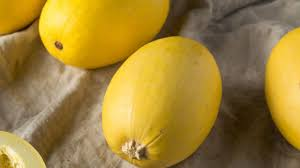Spaghetti squash has become a popular vegetable for its versatility in the kitchen and health benefits. It’s gluten-free, low in carbohydrates, high in vitamins, and a good source of fiber. With a slightly sweet, mild flavor, it’s often grown locally, making it an appealing addition to many diets. For gardeners and home cooks alike, spaghetti squash is a relatively easy and rewarding crop to grow.
Growing Spaghetti Squash
Originating in Mexico, spaghetti squash is a close relative of summer squash and matures quickly, often producing mature fruits about eight weeks after planting. It grows best when given plenty of space, as the vines can stretch up to 15 feet. These long vines benefit from their ability to develop supplemental roots where they touch the ground, providing extra support in case the main crown of the plant is damaged by pests like squash vine borers.
For those with limited garden space, small-fruited varieties of spaghetti squash can be trained to grow up a fence or trellis. In areas with more space, growing the squash outside of traditional garden beds, such as on a patch of lawn, is an effective way to manage the sprawling vines.

A well-prepared site with rich compost is essential for a successful harvest. Spaghetti squash thrives in nutrient-dense soil made from a combination of composted leaves, manure, and garden waste. It’s crucial to plant your seedlings in soil that is well-drained but rich in organic matter for optimal growth.
Like other squashes, spaghetti squash has male and female flowers, which are usually pollinated by bees. To ensure good pollination, you’ll need to grow at least four healthy plants, or consider planting a different type of summer squash nearby to help with pollen supply. Starting seeds indoors and transplanting stocky, three-week-old seedlings outdoors when the weather warms up can help guarantee a good crop, especially in cooler climates.
Spaghetti squash plants typically produce four to five fruits per vine. Once harvested, they should be cured like other winter squash. To do this, cut the squash with a small stub of the stem attached and allow it to sit in a warm place for a few weeks. Properly cured spaghetti squash can last for up to three months when stored in a cool, dry area. However, it’s best to eat it sooner rather than later, as it doesn’t store as long as other varieties of winter squash like butternut.
Cooking Spaghetti Squash
One of the most attractive features of spaghetti squash is its texture. When cooked, its flesh naturally separates into noodle-like strands, making it a fantastic substitute for pasta in various dishes.
To cook spaghetti squash, first cut it in half lengthwise and remove the seeds. Then, place the halves cut side down in a large baking pan, adding a cup of water. Bake at 375°F (190°C) for around 30 minutes or until the squash is tender. Once cooked, allow the squash to cool enough to handle, then use a fork to gently scrape out the strands.

These strands can be refrigerated and used in many dishes. The simplest way to enjoy spaghetti squash is to toss the warm strands with butter, salt, pepper, and a sprinkle of sharp cheese. You can also experiment with Asian flavors, using the squash in place of cellophane noodles for a hot and sour soup.
For a more filling meal, try incorporating spaghetti squash into egg dishes such as frittatas, omelets, or fritters. Fritters are small, pan-fried pancakes made from the squash, bound with egg and flour, and served with a spicy sauce for added flavor.
For a rich, comforting dish, consider making a cheesy spaghetti squash gratin. To make a quick version, toss the squash noodles with sour cream, salt, pepper, and chopped garlic, then place them in a buttered casserole dish. Top with a mixture of sharp grated cheese and breadcrumbs and bake until bubbly and golden brown. This cheesy gratin is a delicious way to enjoy spaghetti squash, providing the perfect balance of creamy texture and savory flavor.
In conclusion, whether you’re growing it in your garden or enjoying it in the kitchen, spaghetti squash is a versatile and healthy ingredient. With a little care in both cultivation and preparation, you can enjoy this nutritious squash in a variety of tasty ways.
